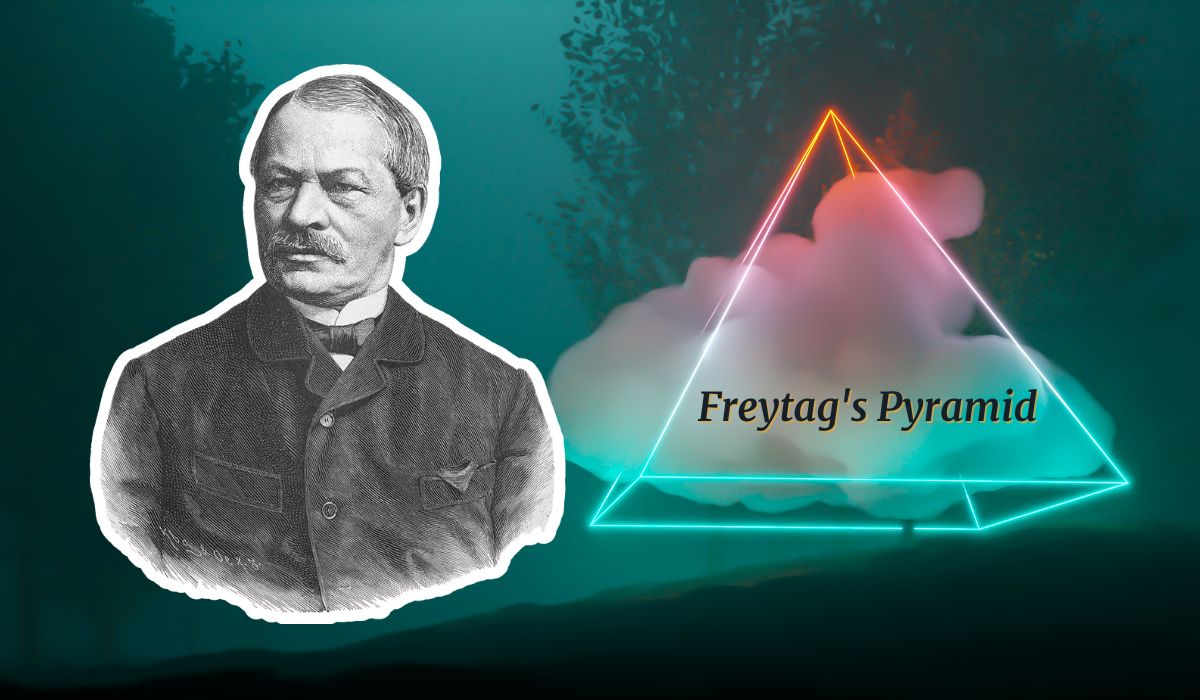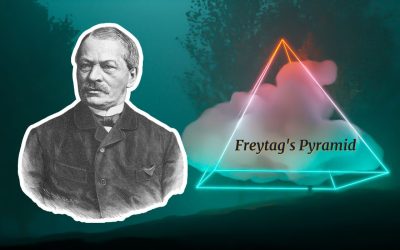Freytag’s Pyramid is a crucial tool for creative writers, providing a well-structured framework for crafting compelling narratives. Named after the 19th-century German novelist and playwright Gustav Freytag, this model breaks down narrative structures into five key stages: exposition, rising action, climax, falling action, and denouement. This pyramid serves as a guide, helping writers to create engaging stories with a clear beginning, middle, and end. By ensuring that each story stage effectively leads to the next, Freytag’s Pyramid aids writers in maintaining a consistent narrative flow, captivating readers’ attention and ensuring a satisfying resolution. In essence, it forms the backbone of many compelling narratives, making it an invaluable tool in the arsenal of any creative writer.
The Importance of Structure in Writing
Story structure is a fundamental element in writing because it provides a clear and organized roadmap for conveying the narrative, making it digestible and engaging for readers. It enables writers to present their ideas coherently, guiding the reader through the narrative journey with a defined beginning, a buildup of events, a climax, and a resolution. Without a well-defined structure, stories can feel disjointed, confusing, or incomplete, making it difficult for readers to remain engaged or understand the narrative’s purpose. Freytag’s Pyramid, with its five-part structure, has remained a highly influential tool in modern storytelling. It is widely utilized in various mediums–from novels and plays to films and television series. While not all stories strictly adhere to this model, many incorporate its fundamental principles. Freytag’s Pyramid remains a testament to its enduring relevance, as it continues to guide writers in crafting narratives that resonate with audiences and effectively convey their intended messages.
The 5 Stages of Freytag’s Pyramid
The Freytag Pyramid consists of five distinct stages that denote the rise and fall of tension within dramatic structure. Each of these stages denotes an arm of the pyramid, or a changing point in the story that leads to lesser or greater tension.

1. Exposition
This is the introductory stage of the narrative, where the writer sets the scene, introduces the main characters, and provides necessary background information. The general situation from which the main conflict will eventually arise is typically presented during the exposition.
2. Rising Action
Here, the main problem or conflict that drives the plot is introduced. The tension and complexity of the story build as challenges, obstacles, or complications are encountered. This is typically where the protagonist will face numerous struggles that need to be overcome.
3. Climax
This is the highest point of tension in dramatic narrative structure. This is the turning point of the story, often the most intense moment. The tension built up during the rising action reaches a peak, usually involving a decisive confrontation between the protagonist and antagonist or a moment of crisis that demands a decision from the main character.
4. Falling Action
After the climax, the story begins to slow down and work towards its end, wrapping up the narrative, unraveling the remaining plot threads, and leading towards the resolution. The consequences of the climax are explored, and the protagonist often deals with the aftermath of their decision or battle.
Denouement (also known as resolution)
This is the final stage, where the narrative’s remaining loose ends are tied up, conflicts are resolved, and a sense of closure is provided. It’s the stage where the aftermath of the action is explained, potentially with a return to normalcy for the characters or a commentary on the events that have transpired.
Examples of Freytag’s Pyramid in Famous Literature
Freytag’s Pyramid is a time-tested structure for storytelling that continues to shape narrative construction across various forms of literature. A clear example of its use can be seen in the following examples:
William Shakespeare’s Romeo and Juliet: The exposition introduces the feuding Montagues and Capulets; the rising action includes Romeo and Juliet’s secret marriage; the climax arrives with the deaths of Mercutio and Tybalt; the falling action encompasses Romeo’s exile and Juliet’s faked death; and the denouement occurs with the tragic suicides of the star-crossed lovers.
F. Scott Fitzgerald’s The Great Gatsby: The exposition presents the mysterious Jay Gatsby, the rising action involves Gatsby’s extravagant lifestyle and Daisy’s affair. The climax occurs at the Plaza Hotel confrontation, and the falling action covers Gatsby’s murder. The denouement reveals Nick’s disillusionment with the decadent East.
A modern example of Freytag’s Pyramid in literature can be seen in J.K. Rowling’s Harry Potter and the Sorcerer’s Stone.
- Exposition: The book introduces us to Harry Potter, a young boy living unhappily with his cruel aunt, uncle, and cousin, unaware that he is actually a wizard. The magical world is revealed to us and to Harry, who learns about his parents and his own fame in the wizarding world.
- Rising Action: Harry enters Hogwarts School of Witchcraft and Wizardry, makes friends, and begins to learn magic. He discovers the mystery of the Sorcerer’s Stone and comes to believe that someone is trying to steal it.
- Climax: Harry and his friends go through a series of trials and confront the person they believe is trying to steal the stone, only to find that it’s Professor Quirrell, who’s been possessed by Voldemort.
- Falling Action: Harry battles Quirrell and Voldemort and manages to secure the Sorcerer’s Stone, though he’s injured in the process. Dumbledore explains to Harry what happened and why Harry was able to defeat Quirrell.
- Denouement: Harry leaves Hogwarts for the summer to return to his aunt and uncle’s house, but now he has the comfort of knowing he’ll be returning to Hogwarts and his friends after the summer.
This breakdown demonstrates how Rowling used Freytag’s Pyramid to build tension and narrative drive in her novel, a technique that has contributed to the series’ global popularity.

A BFA Creative Writing student at UNCW, Conner DiGiacomo is an author known for short stories and poetry in the realm of magical realism. He has won awards for his poetry since high school, written multiple published investigative articles, and is an active participant in the creative community at large. If you’re in Wilmington, you can find Conner volunteering at WHQR Public Radio, reading at open mics, and perusing local record stores.








